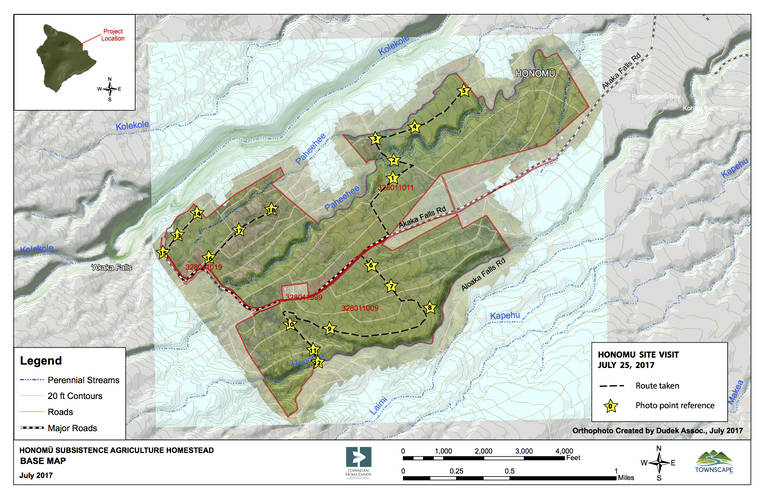The state Department of Hawaiian Home Lands took another step toward developing its first project for
Native Hawaiian beneficiaries interested in subsistence farming on small lots.
The agency issued its final environmental assessment for the planned Honomu Subsistence Agricultural Homestead Community in South Hilo, finding no significant impact to the environment.
The assessment paves
the way for DHHL to submit plans next month to Hawaii County, with the expectation of soliciting development bids early next year.
The Honomu project would have up to 375 subsistence lots of 1 to 3 acres, plus some larger agricultural lots more geared for commercial purposes.
The project will be the first under the department’s revised administrative rules that permits the development of subsistence agricultural lots of up to 3 acres. That is smaller than what has historically been
created for its traditional
agricultural homesteads, which typically had lots of at least 5 acres.
But lessees on the traditional lots have had difficulty farming for a variety of reasons, including lots too large to manage and the lack of technical and lease management support, according to DHHL’s environmental assessment report.
The changes made to the administrative rules in 2017 removed two key requirements seen as hurdles for subsistence farming.
Having a marketing plan and at least two-thirds of the acreage under cultivation constantly are not required for subsistence lots, which are intended for those wanting to be self-sufficient and to grow enough to feed their families.
DHHL manages a 203,000-acre land trust that is designed to get those who are at least 50% Native Hawaiian onto residential, farming or ranching homesteads. Leases are awarded for 99 years at a cost of $1 annually.
The Honomu project would help address what is in the greatest demand on the Big Island.
As of Sept. 30, about 7,200 of the pending 14,825 homestead applications, or 49%, are for farming lots, according to DHHL. Nearly 40% are for residential, with the remainder for pastoral lots.
The application totals do not reflect the actual number of applicants because a beneficiary can apply for two lots — a residential and a pastoral or agricultural one.
The first Honomu lots are expected to be available in 2020 and would be offered to those at the top of the agriculture wait list for that island. The top 500 on the list applied between 1952 and 1985, according to DHHL’s environmental assessment report. That means the beneficiary at the top of the list has been waiting for 67 years.
Ian Lee Loy, a Big Island homesteader and former
Hawaiian Homes commissioner, said he was supportive of the Honomu project.
“It really has great potential,” Lee Loy said. But before DHHL “goes too far down the road” with other subsistence projects, it needs to survey those on the waiting lists to get new data and ensure the department is meeting their needs, he added.
The Honomu project reflects an expanded list of options DHHL can develop on trust lands based on recent changes to its administrative rules. Multi-family, rental and kupuna housing were added to the list this year.
The first phase of the Honomu project is expected to cost $2 million and will include infrastructure, including paved roads but no sidewalks, for 16 1-acre lots near Akaka Falls.
The lessees are allowed to build homes on their lots but are not required to do so. They must, however, actively farm the land.
“Honomu is a pilot project to implement the department’s new rules for subsistence agricultural lots,” said Hawaiian Homes Commission Chairman William Aila Jr. in a statement. “These lots will allow beneficiaries to live and cultivate their land while producing locally grown food for themselves and their families, all in fulfillment of Prince Kuhio’s vision.”
Prince Jonah Kuhio Kalanianaole spearheaded the passage of the federal law in 1921 that created the land trust that DHHL now oversees.

